
Villanúa is a Pyrenean municipality in Spain in the north of Huesca province, in la Jacetania, set where the Aragon valley gets wider. Its name refers to the "new village" repopulated in the late 10th century. Villanúa's altitude is 953 m and it covers 58.2 km2. The village is at the bottom of mount Collarada and in 2018 had 447 inhabitants.
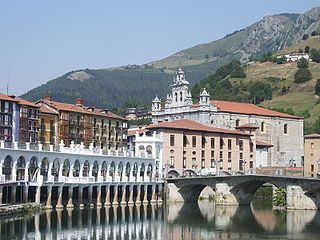
Tolosa is a town and municipality in the Basque province of Gipuzkoa, in northern Spain. It is located in the valley of the river Oria, next by Uzturre, a local mountain topped by a white cross.

Didacus of Alcalá, also known as Diego de San Nicolás, was a Spanish Franciscan lay brother who served as among the first group of missionaries to the newly conquered Canary Islands. He died at Alcalá de Henares on 12 November 1463 and is now honored by the Catholic Church as a saint.
San Esteban is a municipality in the northeast of the Honduran department of Olancho, west of Dulce Nombre de Culmí, east of Gualaco and north of Catacamas. Costa Rican author Oscar Núñez Oliva set his 2000 novel Los Gallos de San Esteban in the municipality.
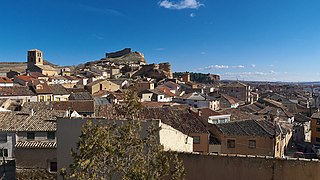
San Esteban de Gormaz is a municipality in the province of Soria in the autonomous community of Castile-Leon, Spain. Its population is approximately 3,500. The town is located in the Wool Route and the Way of the Cid, the route of the exile of the Cid.

Getaria is a coastal town located in the province of Gipuzkoa, in the autonomous community of Basque Country, in the North of Spain. This coastal village is located on the Urola Coast, with Zarautz to the east and Zumaia to the west.
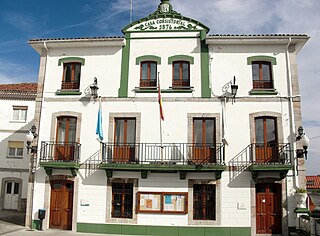
Muros de Nalón is a small coastal municipality in the Spanish province of Asturias, with an area of 8.09 square kilometers. It is bounded to the north by the Bay of Biscay, to the east by the river Nalón, to the south by Pravia and the west by Cudillero. The eucalyptus tree is the town tree and occupies great parts of the slopes down to the coast.

Baralla is a municipality in the Spanish province of Lugo. It belongs to the comarca of Los Ancares Lucenses and covers 32 villages. Until the late 1970s it was called Neira of Jusá.

San Esteban de la Sierra is a village and municipality in the province of Salamanca, western Spain, part of the autonomous community of Castile-Leon. It is located 65 kilometres from the provincial capital city of Salamanca and has a population of 340 people.
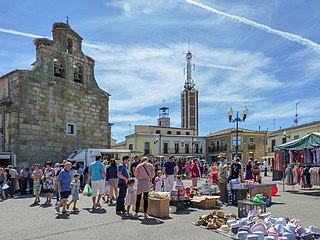
La Fuente de San Esteban is a village and large municipality in the province of Salamanca, western Spain, part of the autonomous community of Castile-Leon. It is located 54 kilometres (34 mi) from the provincial capital city of Salamanca and has a population of 1,358 people.
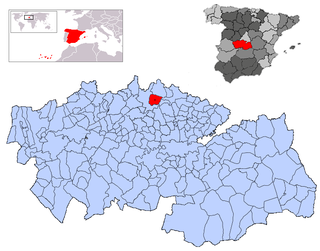
La Torre de Esteban Hambrán is a Spanish village and municipality in the province of Toledo in Castile-La Mancha. It is adjacent to the municipalities of Santa Cruz del Retamar, Méntrida, Casarrubios del Monte, and Las Ventas de Retamosa.

Navaleno, which means "Meadow of Hay", is a municipality located to the northwest of the province of Soria, in the autonomous community of Castile and León, in Spain.

Tolbaños is a municipality located in the province of Ávila, Castile and León, Spain. According to the 2004 census (INE), the municipality has a population of 111 inhabitants.
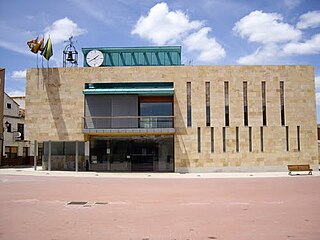
Pedrajas de San Esteban is a municipality located in the province of Valladolid, Castile and León, Spain. According to the 2004 census (INE), the municipality has a population of 3,317 inhabitants.

Viguera is a municipality in La Rioja, Spain. It includes the villages Castañares de las Cuevas, El Puente, and Panzares.

The San Esteban National Park is located in Carabobo, Venezuela.

The San José Mine is a small copper-gold mine located near Copiapó, Atacama Region, Chile. The mine became known internationally for its collapse in 2010, which trapped 33 miners 700 metres (2,300 ft) underground. Its workings are reached by a long sloping roadway with many spiral turns, not by a vertical mineshaft.

Préjano is a village and municipality of la Rioja Baja, in the autonomous community of La Rioja, Spain. It is located on the left bank of the Ruesca river, tributary of the Cidacos. It is a former mining village, nowadays its inhabitants are supported by agriculture or work in industry of the nearby Arnedo, capital of the comarca.
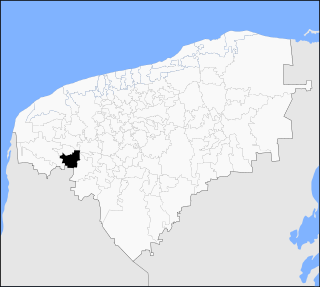
Opichén Municipality is one of the 106 municipalities in the Mexican state of Yucatán containing (268.25 km2) of land and is located roughly 75 kilometres (47 mi) south of the city of Mérida.
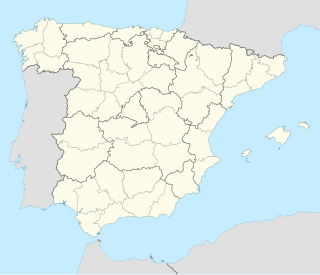
Velilla de San Esteban is a village in Soria, Spain. It is part of the municipality of San Esteban de Gormaz. The village had 37 inhabitants in 2000 and just 10 in 2017.



















